雅思阅读同义词替换四项基本原则 剑6Test2听力Section2解析【雅思真题】很多朋友对这方面很关心,大学路整理了相关文章,供大家参考,一起来看一下吧!
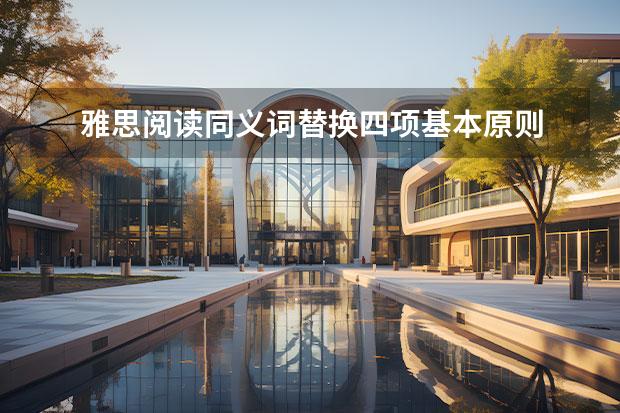
1词性之间的替换
词性的替换主要是指题目中的关键信息与原文中的内容在词性上做了变化而已。这样的替换相对来说,难度系数偏低,只需要考生能够辨认出相同的词根即可。
Example 1:
Cambridge8,Test3中Q35:Through mutations, organi*s can 35 better to the environment.首先通过mutation一词将此填空题在原文定位到第C段”Because of changes in the genetic material (mutations) these have new characteristics and in the course of their individual lives they are tested for optimal or better adaptation to the environmental conditions.”然后寻找空后关键词better to,根据空格前的情态动词can推测空格处只能填一个动词,而且是原形,还要能和to搭配。这么一来,这句话里只有一个对应词比较合适:adaption,将其变形为动词adapt即可。
Example 2:
Cambridge6,Test2中Q17Q18:This is largely due to developments in 17 , but other factors such as improved 18 may also be playing a part.定位到原文第四段”Clearly, certain diseases are beating a retreat in the face of medical advances. But there may be other contributing factors. Improvements in childhood nutrition in the first quarter of the twentieth century….”表明有些疾病是被medical advances打败的。根据空格前的介词可以判断17题缺一个跟developments相关的名词。正确选项是medical的同根词M(medicine)。而18题是一个被improved修饰的名词,原文中improvements是它的同根词,所以答案是选项J (nutrition)。
这样的替换,即使单词是陌生的,却可以通过相同的词根或词形来帮助考生去挑选答案。要想掌握好这样的替换,也就要求考生尽可能地去多熟悉英语词汇中各种词根与词缀的应用。
剑桥阅读中出现的同根词变身:
ability → able
diabetic → diabetes
secrete → secretions
fertilise → fertilisers
creativity → creative
investigative → investigate
prefer → preference
emit → emission
predictability → predicted
2同义词/近义词之间的替换
同义词替换是指考题与原文中的关键内容用同义词进行一种互换。此类替换占据同义替换现象的大部分内容,而且几乎所有的题型都会有这样的替换现象。且大量常见的词都会主要是以名词与动词为主。
Example 3:
Cambridge6,Test4的Q9:Kim Schaefer’s marketing technique may be open to critici* on moral grounds.在原文第三段中定位到”Selling pharmaceuticals is a daily exercise in ethical judgment,”其中ethical即为原文中moral的同义词。
考生只需要在平时增加词汇量时有意识地去注意一些常见同义词,雅思阅读的解答也就变得简单很多了。其实严格意义上来讲,同义词应该还包括一些常用词组或短语之间的一种互换。
Example 4:
Cambridge7,Test4的Q19:Between 1940 and 1959, there was a sharp decrease in Alaska's salmon population.此题为是非判断题。利用between 1940 and 1959定位到原文第4段Between 1940 and 1959, overfishing led to crashes in salmon population so severe that in 1953 Alaska was declared a federal disaster area. 原文中的crashes与题干中的sharp decrease属于近义词(语义相同的词)之间的替换。
Example 5:
Cambridge6,Test1的Q38Q39:In recent years, many of them have been obliged to give up their 38 lifestyle, but they continue to depend mainly on 39 for their food and clothes.定位到原文D段:Over the past 40 years, most have abandoned their nomadic ways and settled in the territory’s 28 isolated communities, but they still rely heavily on nature to provide food and clothing.题干中提及被迫放弃什么生活方式,因此要求填一个形容词来修饰lifestyle。而时间状语in recent years是定位词。按顺序原则,原文的时间状语over the past 40 years正好跟in recent years对应,abandon与give up,ways和lifestyle对应,答案便是abandon后面的宾语ways的修饰语nomadic。同时判断depend on后面需要填一个名词,即依靠什么东西。而后面的food and clothes是非常好的定位词。很快可以在原文中找到对应depend on的rely on,而后面又有food and clothes。因此可以很清楚地判断出rely on的宾语nature就是答案。
剑桥中出现的同义词/近义词
change → shift / revision
overstate → exaggerate
target → goal
comments → feedback
performance → achievement
metropolitan → city
world → global
perceive → sense / feel
calculate → measure
resemble → look like
link to → associated with
expert → scientist
hard to find → elusive
3.否定加反义之间的替换
Example 6:
Cambridge7,Test1的Q33:In the follow-up class, the teaching activities are similar to those used in conventional classes.根据顺序原则以及follow-up可以定位到原文第6段。Such methods are not unusual in language teaching.题干中similar to和原文的not unusual属于否定加反义之间的替换。
Example 7:
Cambridge8,Test3的Q38:In principle, it is possible for a biological system to become older without ageing.可以定位到原文第三段Thus ageing and death should not be seen as inevitable, particularly as the organi* possesses many mechani* for repair.题干中possible是原文not inevitable的否定加反义替换。
剑桥阅读中出现的否定加反义替换
downward → not rising
not traditional → radical new approaches
with no rain at all →droughts
4.上下义词之间的替换
所谓上下义,是指替换的词语之间通常有一种从属关系。在雅思的阅读中这类替换往往出现在段落配对题之中,题目中给的是一个具有属性或者是表示概念的词语,而在原文中出现的替换词却是一个具体或者是细节的信息,考察考生对这两者之间从属关系的配对。
Example 8:
Cambridge6,Test3的Q28:Studies show drugs available today can delay the process of growing old。此题为是非判断题,定位词为“drugs”,在原文中定位,我们能在文章第一段找到“As researchers on aging noted recently, no treatment on the market today has been proved to slow human aging—the build-up of molecular and cellular damage that increases vulnerability to infirmity as we get older”。原文中treatment即为题干中drugs的上义词。
Example 9:
Cambridge7,Test1的Q5:early military use of echolocation 。此段落信息配对题在原文定位的句子是“it was only a matter of time before weapons designers adapted it for the detection of submarines.之所以这样定位,就是原文中weapon一词作为题干中military的下义词出现。
剑桥阅读中出现的上下义词替换
chemical → fertilizer and pesticide
military → Second World War
body language → gesture
farming → grow plants and herd animals
environment → light, sound and warmth
四种难度依次递增的同意替换,使雅思阅读的考题显得变换无穷,同时也将阅读的难度提到了一个不同的高度。所以有很多考生抱怨,题目特点和解题技巧都很清楚,定位词也能找准,可就是定位不到题目在原文中对应内容的位置。其实这源于考生没有真正了解雅思阅读考查词汇的变形。所以考生只要掌握4、6级词汇,熟悉以上四种替换原则,在原文中寻找这些替换表达,即可快速且准确地完成定位和答题。
做好雅思的阅读题除了掌握对的 方法 ,也离不开我们日常的辛勤练习,下面我给大家带来剑桥雅思阅读AUSTRALIA’S SPORTING SUCCESS及答案解析,一起加油吧!
剑桥雅思阅读AUSTRALIA’S SPORTING SUCCESS
READING PASSAGE 1
You should spend about 20 minutes on Questions 1-13, which are based on Reading Passage 1 below.
AUSTRALIA’S SPORTING SUCCESS
A They play hard, they play often, and they play to win. Australian sports teams win more than their fair share of titles, demolishing rivals with seeming ease. How do they do it? A big part of the secret is an extensive and expensive network of sporting academies underpinned by science and medicine. At the Australian Institute of Sport (AIS), hundreds of youngsters and pros live and train under the eyes of coaches. Another body, the Australian Sports Commission (ASC), finances programmes of excellence in a total of 96 sports for thousands of sport*en and women. Both provide intensive coaching, training facilities and nutritional advice.
B Inside the academies, science takes centre stage. The AIS employs more than 100 sports scientists and doctors, and collaborates with scores of others in universities and research centres. AIS scientists work across a number of sports, applying skills learned in one — such as building muscle strength in golfers — to others, such as swimming and squash. They are backed up by technicians who design instruments to collect data from athletes. They all focus on one aim: winning. ‘We can’t waste our time looking at ethereal scientific questions that don’t help the coach work with an athlete and improve performance,’ says Peter Fricker, chief of science at AIS.
C A lot of their work comes down to measurement — everything from the exact angle of a swimmer’s dive to the second-by-second power output of a cyclist. This data is used to wring improvements out of athletes. The focus is on individuals, tweaking performances to squeeze an extra hundredth of a second here, an extra millimetre there. No gain is too slight to bother with. It’s the tiny, gradual improvements that add up to world-beating results. To demonstrate how the system works, Bruce Mason at AIS shows off the prototype of a 3D *ysis tool for studying swimmers. A wire-frame model of a champion swimmer slices through the water, her arms moving in slow motion. Looking side-on, Mason measures the distance between strokes. From above, he *yses how her spine swivels. When fully developed, this system will enable him to build a biomechanical profile for coaches to use to help budding swimmers. Mason’s contribution to sport also includes the development of the SWAN (Swimming Analysis) system now used in Australian national competitions. It collects images from digital cameras running at 50 frames a second and breaks down each part of a swimmer’s performance into factors that can be *ysed individually — stroke length, stroke frequency, average duration of each stroke, velocity, start, lap and finish times, and so on. At the end of each race, SWAN spits out data on each swimmer.
D ‘Take a look,’ says Mason, pulling out a sheet of data. He points out the data on the swimmers in second and third place, which shows that the one who finished third actually swam faster. So why did he finish 35 hundredths of a second down? ‘His turn times were 44 hundredths of a second behind the other guy,’ says Mason. ‘If he can improve on his turns, he can do much better.’ This is the kind of accuracy that AIS scientists’ research is bringing to a range of sports. With the Cooperative Research Centre for Micro Technology in Melbourne, they are developing unobtrusive sensors that will be embedded in an athlete’s clothes or running shoes to monitor heart rate, sweating, heat production or any other factor that might have an impact on an athlete’s ability to run. There’s more to it than simply measuring performance. Fricker gives the example of athletes who may be down with coughs and colds 11 or 12 times a year. After years of experimentation, AIS and the University of Newcastle in New South Wales developed a test that measures how much of the immune-system protein immunoglobulin A is present in athletes’ saliva. If IgA levels suddenly fall below a certain level, training is eased or dropped altogether. Soon, IgA levels start rising again, and the danger passes. Since the tests were introduced, AIS athletes in all sports have been remarkably successful at staying healthy.
E Using data is a complex business. Well before a championship, sports scientists and coaches start to prepare the athlete by developing a ‘competition model’, based on what they expect will be the winning times.’ You design the model to make that time,’ says Mason.’ A start of this much, each free-swimming period has to be this fast, with a certain stroke frequency and stroke length, with turns done in these times.’ All the training is then geared towards making the athlete hit those targets, both overall and for each segment of the race. Techniques like these have transformed Australia into arguably the world’s most successful sporting nation.
F Of course, there’s nothing to stop other countries copying — and many have tried. Some years ago, the AIS unveiled coolant-lined jackets for endurance athletes. At the Atlanta Olympic Games in 1996, these sliced as much as two per cent off cyclists’ and rowers’ times. Now everyone uses them. The same has happened to the ‘altitude tent’, developed by AIS to replicate the effect of altitude training at sea level. But Australia’s success story is about more than easily copied technological fixes, and up to now no nation has replicated its all-encompassing system.
剑桥雅思阅读AUSTRALIA’S SPORTING SUCCESS题目
Questions 1-7
Reading Passage 1 has six paragraphs, A-F.
Which paragraph contains the following information?
Write the correct letter, A-F, in boxes 1-7 on your answer sheet.
NB You may use any letter more than once.
1 a reference to the exchange of expertise between different sports
2 an explanation of how visual imaging is employed in investigations
3 a reason for narrowing the scope of research activity
4 how some AIS ideas have been reproduced
5 how obstacles to optimum achievement can be investigated
6 an overview of the funded support of athletes
7 how performance requirements are calculated before an event
Questions 8-11
Classify the following techniques according to whether the writer states they
A are currently exclusively used by Australians
B will be used in the future by Australians
C are currently used by both Australians and their rivals
Write the correct letter, A, B or C, in boxes 8-11 on your answer sheet.
8 cameras
9 sensors
10 protein tests
11 altitude tents
Questions 12 and 13
Answer the questions below.
Choose NO MORE THAN THREE WORDS ANDIOR A NUMBER from the passage for each answer.
Write your answers in boxes 12 and 13 on your answer sheet.
12 What is produced to help an athlete plan their performance in an event?
13 By how much did some cyclists’ performance improve at the 1996 Olympic Games?
剑桥雅思阅读AUSTRALIA’S SPORTING SUCCESS答案
Question 1
答案:B
关键词:exchange of expertise, between different sports/collaborate, across a number of sports
定位原文:B段第2、3句“...and collaborates with… a number of sports …”
解题思路: 题干中讲到不同体育领域的专业知识交流正好跟原文中跨不同体育专家之间的合作相对应,理解意思即可容易找到正确答案。
Question 2
答案:C
关键词: visual imaging/3D, image
定位原文: C段第6句: “...shows off the prototype of a 3D *ysis …”
解题思路: 通过题干中的视频成像可以很容易找到原文中对应的3D和成像。
Question 3
答案:B
关键词: a reason for narrowing/ can’t waste time
定位原文: B段最后1句: “We can’t waste our time looking…”
解题思路: 题目中的research activity和原文中的scientific questions 属于同义表达,定位答题区域,发现此句话所要表达的意思是不在一些飘渺的、不切实际的科学问题上浪费时间,也就是说要缩小研究的范围。
Question 4
答案:F
关键词:AIS ideas reproduce/ copying
定位原文: F段第1句话 “Of course, there’s nothing…”
解题思路: 题干中的reproduce是复制的意思,之后从 文章 中发现 句子 有复制copying,即可以直接定位。
Question 5
答案:D
关键词:Obstacle, investigated/ impact, monitor
定位原文: D段第6句“... to monitor heart rate…”
解题思路: 题干提到理想成绩的障碍是如何被调查研究的,而读到对应句子之后看到正好是sensors(传感器)对于运动员跑步的impact(影响)进行研究的仪器,而且obstacles和impact对应。
Question 6
答案:A
关键词:Overview, funded support finance
定位原文: A段倒数第2句 “...finances programmes of excellence…”
解题思路: finances是解题关键,意思为资助,正好跟题干中funded support表达了相同的义项,直接对应。而且之后一句话提及以上项目所提供的服务和建议,可以确信答案。
Question 7
答案:E
关键词:Calculated before an event/ using data, well before a championship
定位原文: E段第1句、第2句 “Using data is a complex business. Well before a championship, ...”
解题思路: 首先通过well before a championship和文章中before an event定位到E段, 之后发现后面提及的“竞争模型”作用就是计算时间和速率,因此内容对应上calculate,此时可断定答案的位置。
Question 8
答案:A
关键词: digital cameras
定位原文: C段倒数第3句: “..SWAN system now used in Australian national…”
解题思路: 前一句已经提到该系统已广泛应用于澳大利亚各项全国赛事之中,而没有提到其他国家,因此可以判断应该只有澳大利亚人在使用。
Question 9
答案:B
关键词:sensor
定位原文: D段第7句:“...With the Cooperative Research Centre for Micro…”
解题思路: 找到相同对应词sensor,读其前后的句子,发现有 Melbourne,断定是澳大利亚人的发明。之后要特别留心动词develop运用现在进行时,表示正在开发;而且注意之后的定语从句采用了将来时,所以可以断定此发明还没有完成,应该属于将来的成果。因此选择B。
Question 10
答案: A
关键词:protein
定位原文: D段倒数第4句: “… AIS and the University of Newcastle…”
解题思路: 非常容易在前面第一句话中找到跟题目protein tests所对应的词语a test ...protein。之后细读前后句,发现后面一句话对于此项科技成果的受益者文章中只提到AIS运动员,即澳大利亚体育学院的运动员,隶属于澳大利亚,所以应该选择A。
Question 11
答案:C
关键词: altitude tent
定位原文: F段倒数第2句: “The same has happened to the ‘altitude tent ’…”
解题思路: 文章中很容易找到用引号括起来的题目中的名词 短语 ,因此只要细心读原句,就会发现开头的‘The same has happened...’同样的事情也发生在……根据 经验 应该顺着文章向上追溯,发现跟‘altitude tent’相同情况的是1996年奥运会上澳大利亚人受益的流线型散热运动服现在全世界都在用。因此 ‘altitude tent’也被世界各国应用。所以答案应该选择C。且根据此段话大意可以了解文章只提到两种研究成果被别国运用,即髙原帐蓬和流线型散热服。所以可以间接判断前三项成果是由澳大利人独享的。
Question 12
答案: (a)competition model
关键词: help an athlete plan, produced / prepare the athlete by, developing
定位原文: E段第1句“Using data…”
解题思路: Help an athlete plan their performance 对应上prepare the athlete by之后,要认真研究题目所问的是what is produced,断定所作答案必定要填一个名词。因此要细读原文发现有单词developing恰与produced相对应,中文意思是“开发”,则答案必定是开发之后的名词。
Question 13
答案: (by)2 percent/%
关键词: 19% Olympic Games, cyclists, improve
定位原文: F段第3句“At the Atlanta…”
解题思路: 分析问句是 ‘By how much... improve’,意思为“提高了多少”,可以判断出答案需要写一个数字。因此仔细阅读相关语句找到 sliced as much as two per cent off cyclists ‘and rowers’ time。很快就可以找到数字百分之二
。
以上就是大学路为大家带来的雅思阅读同义词替换四项基本原则 剑6Test2听力Section2解析【雅思真题】,希望能帮助到大家!
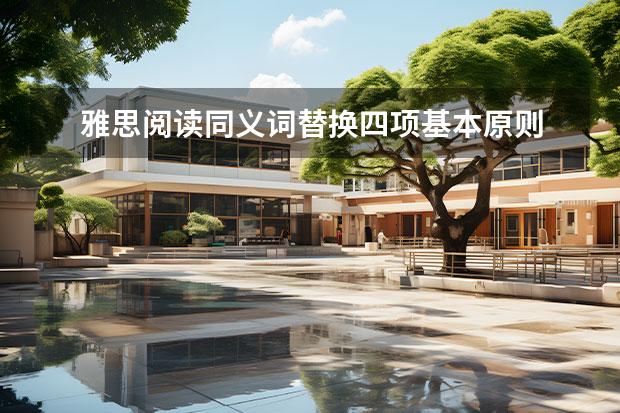 雅思阅读同义词替换四项基本原则 雅思考试:雅思阅读词汇归类及记忆方法 雅思词汇书推荐
雅思阅读同义词替换四项基本原则 雅思考试:雅思阅读词汇归类及记忆方法 雅思词汇书推荐
雅思阅读同义词替换四项基本原则1词性之间的替换词性的替换主要是指题目中的关键信息与原文中的内容在词性
2023年11月04日 15:37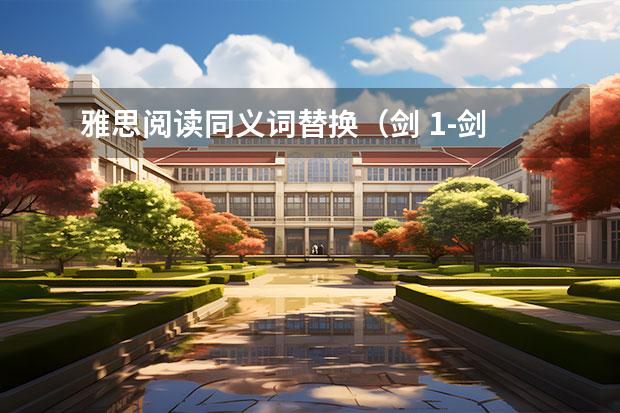 雅思阅读同义词替换(剑 1-剑 9)(备考策略:详解雅思阅读中的同义转换技巧)
雅思阅读同义词替换(剑 1-剑 9)(备考策略:详解雅思阅读中的同义转换技巧)
雅思阅读同义词替换(剑1-剑9)剑9第一篇:剑9第二篇:剑9第三篇:剑9第四篇Theaspectso
2023年11月06日 12:04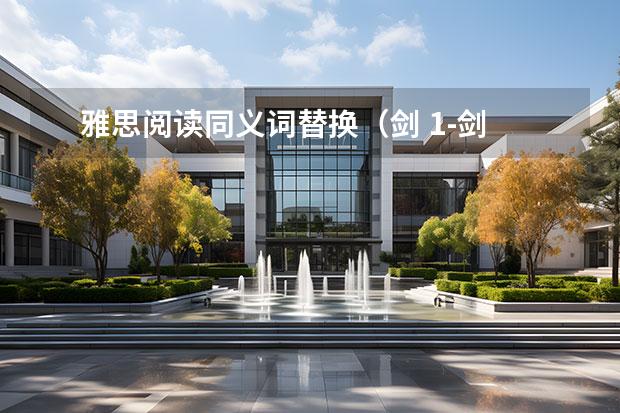 雅思阅读同义词替换(剑 1-剑 9) 备考策略:详解雅思阅读中的同义转换技巧 雅思考点替换词列表
雅思阅读同义词替换(剑 1-剑 9) 备考策略:详解雅思阅读中的同义转换技巧 雅思考点替换词列表
雅思阅读同义词替换(剑1-剑9)剑9第一篇:剑9第二篇:剑9第三篇:剑9第四篇Theaspectso
2023年11月06日 13:14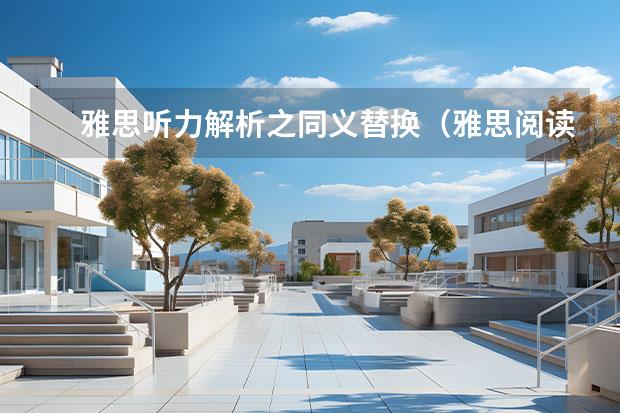 雅思听力解析之同义替换(雅思阅读同义词替换四项基本原则)
雅思听力解析之同义替换(雅思阅读同义词替换四项基本原则)
雅思听力解析之同义替换在浩如烟海的参考书和模拟题中,雅思听力常会有“同义转换”类题目,出现频率之高足
2023年11月06日 13:52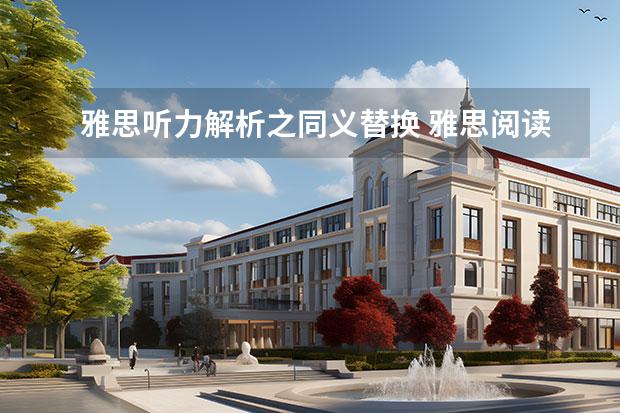 雅思听力解析之同义替换 雅思阅读同义词替换四项基本原则 雅思阅读高分的精读训练方法
雅思听力解析之同义替换 雅思阅读同义词替换四项基本原则 雅思阅读高分的精读训练方法
雅思听力解析之同义替换在浩如烟海的参考书和模拟题中,雅思听力常会有“同义转换”类题目,出现频率之高足
2023年11月06日 14:34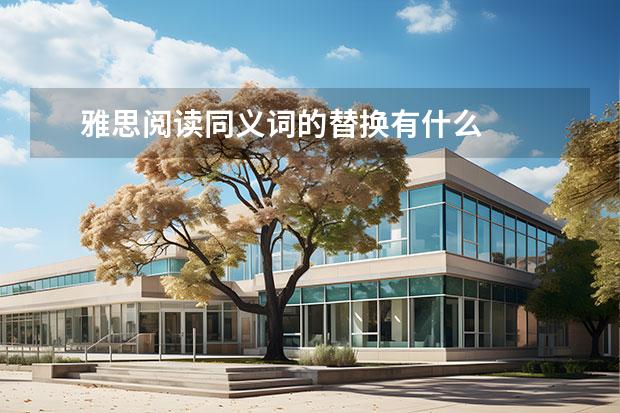 雅思阅读同义词的替换有什么
雅思阅读同义词的替换有什么
雅思阅读同义词替换四项基本原则1词性之间的替换词性的替换主要是指题目中的关键信息与原文中的内容在词性
2023年11月06日 17:03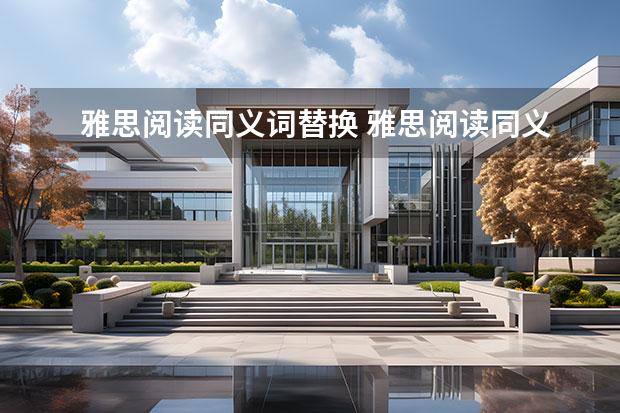 雅思阅读同义词替换 雅思阅读同义词替换四项基本原则 备考策略:详解雅思阅读中的同义转换技巧
雅思阅读同义词替换 雅思阅读同义词替换四项基本原则 备考策略:详解雅思阅读中的同义转换技巧
雅思阅读同义词替换1.initiative=onyourown/byyourself=indepen
2023年11月06日 21:23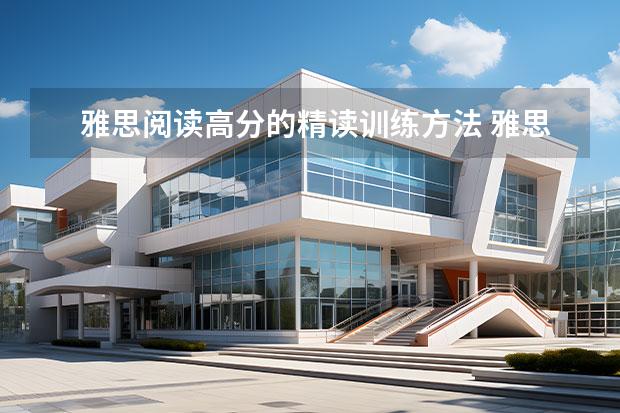 雅思阅读高分的精读训练方法 雅思听力解析之同义替换 雅思阅读同义词替换四项基本原则
雅思阅读高分的精读训练方法 雅思听力解析之同义替换 雅思阅读同义词替换四项基本原则
雅思阅读高分的精读训练方法有人说:精读10篇剑桥阅读文章,就可以上7.5以上;精读30篇剑桥文章,就
2023年11月07日 08:00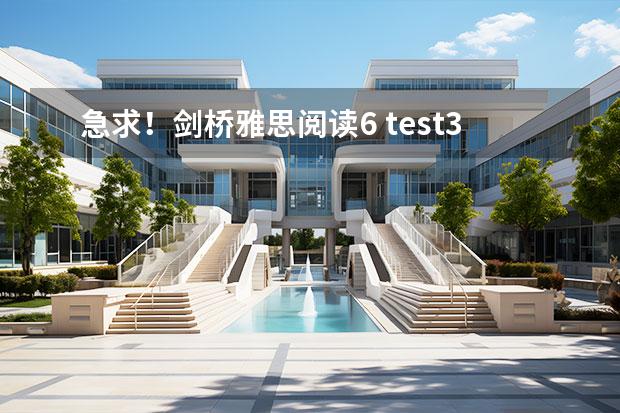 急求!剑桥雅思阅读6 test3答案 剑桥雅思阅读6 test3答案? 雅思阅读同义词替换四项基本原则
急求!剑桥雅思阅读6 test3答案 剑桥雅思阅读6 test3答案? 雅思阅读同义词替换四项基本原则
急求!剑桥雅思阅读6test3答案雅思口语对于雅思备考的同学来讲都是一个不小的难点。雅思口语考试评分
2023年11月07日 15:14 雅思考试常用词替换词汇一览表 雅思阅读同义词替换四项基本原则 雅思阅读同义词替换
雅思考试常用词替换词汇一览表 雅思阅读同义词替换四项基本原则 雅思阅读同义词替换
雅思考试常用词替换词汇一览表雅思的作文考察大家的词汇量,在准备的时候,一定要积累一些表常用的词汇的替
2023年11月07日 16:55
教育部:推动有条件的地方优化学前教育班额和生师比
时间:2024年11月12日
教育部:严格幼儿园教师资质条件,把好教师入口关
时间:2024年11月12日
教育部:教职工存在师德师风问题、侵害幼儿权益要依法严肃追究责任
时间:2024年11月12日
教育部:教师存在师德师风问题,损害幼儿身心健康的,要依法追究责任
时间:2024年11月12日
教育部:2023年全国普惠性幼儿园覆盖率达90.8%
时间:2024年11月12日
河北2024年3月出国留学雅思考试时间安排
时间:2024年02月18日
四川2024年3月出国留学雅思考试时间安排
时间:2024年02月18日
江苏2024年2月出国留学雅思考试时间安排
时间:2024年01月27日
雅思考试写作考试语法常见错误有哪些?
时间:2024年01月26日
雅思零基础该如何学习语法?
时间:2024年01月26日